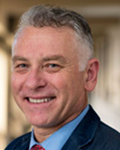27
Jul
2020
18:00
BST
Webinar
The Science of Renal Denervation
-
Views:
 34
34
-
Likes:
 0
0
Overview
The Science of Renal Denervation webinar is a two part video series that will introduce the key concepts critical to understanding the basic mechanism of RF ablation for Renal Denervation. The series is hosted by Prof Andrew Sharp and Dr Stefan Tunev.
The first part of the series, The Science of Renal Denervation - Part 1, is available on-demand and it is recommended that attendees watch this in advance of the live Part 2, to maximise the learnings from this live session.
In this live Part 2, Prof Sharp will open with a short recap of Part 1, followed by the second part of the video, then a Q&A session, where Prof Sharp and Dr Tunev will be available to answer your questions live. This session will be 1 hour in total.
Faculty:

Stefan Tunev

Andrew SP Sharp
This webinar is supported by

Learning Objectives
- Understand the importance of renal anatomy and nerve location on ablation effectiveness
- Confirm the safety and efficacy of RF as an ablation mechanism
- Learn the latest on measuring ablation effectiveness and the relevance of ablation depth
- Examine the functional and physiological evidence around nerve regrowth and RDN durability
Faculty Biographies

Stefan Tunev
Veterinary Pathologist, Fellow in Comparative Medicine, specializing in the field of medical device pathology

Andrew SP Sharp
Prof Andrew Sharp qualified from Edinburgh Medical School in 1998. He conducted his senior clinical training at Imperial College Hospitals and San Raffaele Hospital, Milan, before being appointed in 2011 as a Consultant Cardiologist and Honorary Senior Lecturer at the Royal Devon and Exeter Hospital and University of Exeter. Professor Sharp was awarded an MD postgraduate research degree for his work on the hypertensive heart whilst at Imperial College and now leads a growing research programme at the Royal Devon and Exeter Hospital in the fields of hypertension, renal denervation, ischaemic heart disease, intra-coronary imaging, coronary physiology, pulmonary embolus and aortic valve disease.





